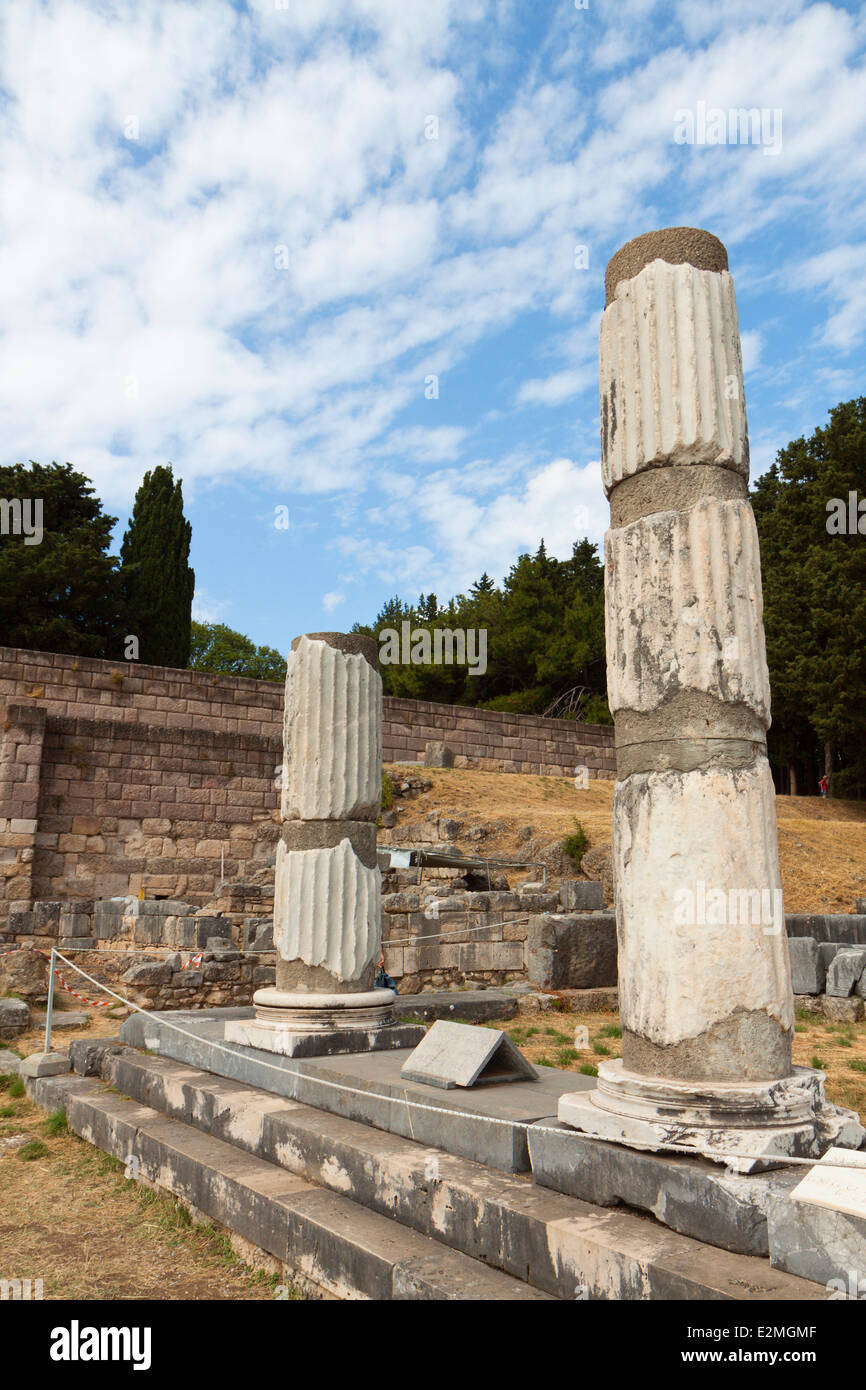Ancient site of Asclepeion at Kos island in Greece

Image details
Contributor:
PANAGIOTIS KARAPANAGIOTIS / Alamy Stock PhotoImage ID:
E2MGMFFile size:
43.1 MB (2 MB Compressed download)Releases:
Model - no | Property - noDo I need a release?Dimensions:
3168 x 4752 px | 26.8 x 40.2 cm | 10.6 x 15.8 inches | 300dpiDate taken:
30 May 2014Location:
Asclepeion sanctuary, Kos island, GreeceMore information:
Asclepius may first have been worshipped as a hero in Troika, Thessaly, which ancient mythographers generally regarded as the place of his birth, but to date archaeological excavations have yet to uncover his sanctuary there. Epidauros, on the other hand, was the first place to worship Asclepius as a god, beginning sometime in the 5th century BC. The asclepieion at Epidaurus is both extensive and well preserved. There is an asclepieion located on the south slopes of the Acropolis of Athens which dates to around 420 BC. Starting around 350 BC, the cult of Asclepius became increasingly popular. Pilgrims flocked to asclepieia to be healed. They slept overnight ("incubation") and reported their dreams to a priest the following day. He prescribed a cure, often a visit to the baths or a gymnasium. Since snakes were sacred to Asclepius, they were often used in healing rituals. Non-venomous snakes were left to crawl on the floor in dormitories where the sick and injured slept. Asclepeia provided carefully controlled spaces conducive to healing and fulfilled several of the requirements of institutions created for healing. In the Asclepieion of Epidaurus, three large marble boards dated to 350 BC preserve the names, case histories, complaints, and cures of about 70 patients who came to the temple with a problem and shed it there. Some of the surgical cures listed, such as the opening of an abdominal abscess or the removal of traumatic foreign material, are realistic enough to have taken place, but with the patient in a dream-like state of induced sleep known as "enkoimesis" (Greek: ἐγκοίμησις) not unlike anesthesia, induced with the help of soporific substances such as opium.